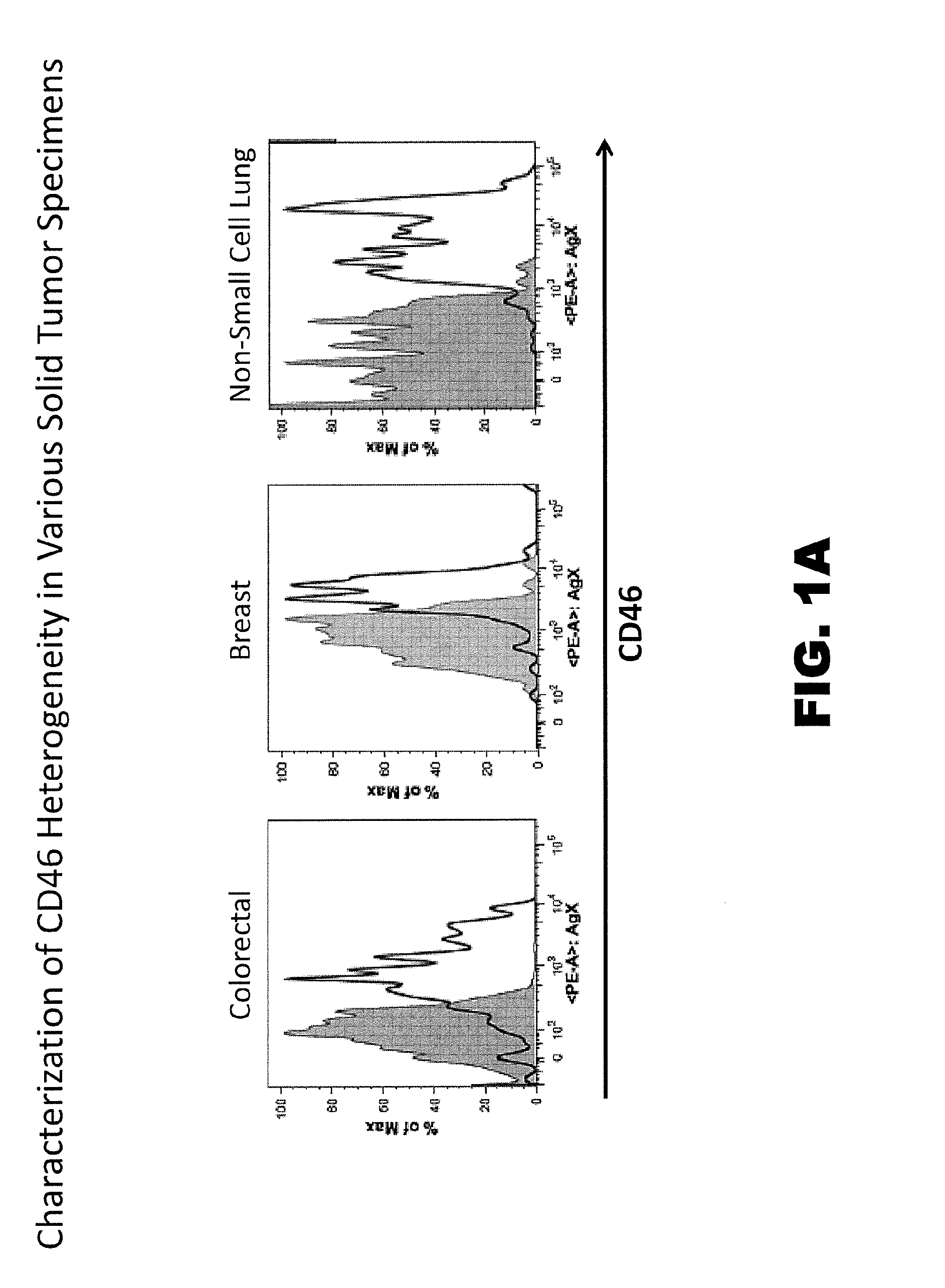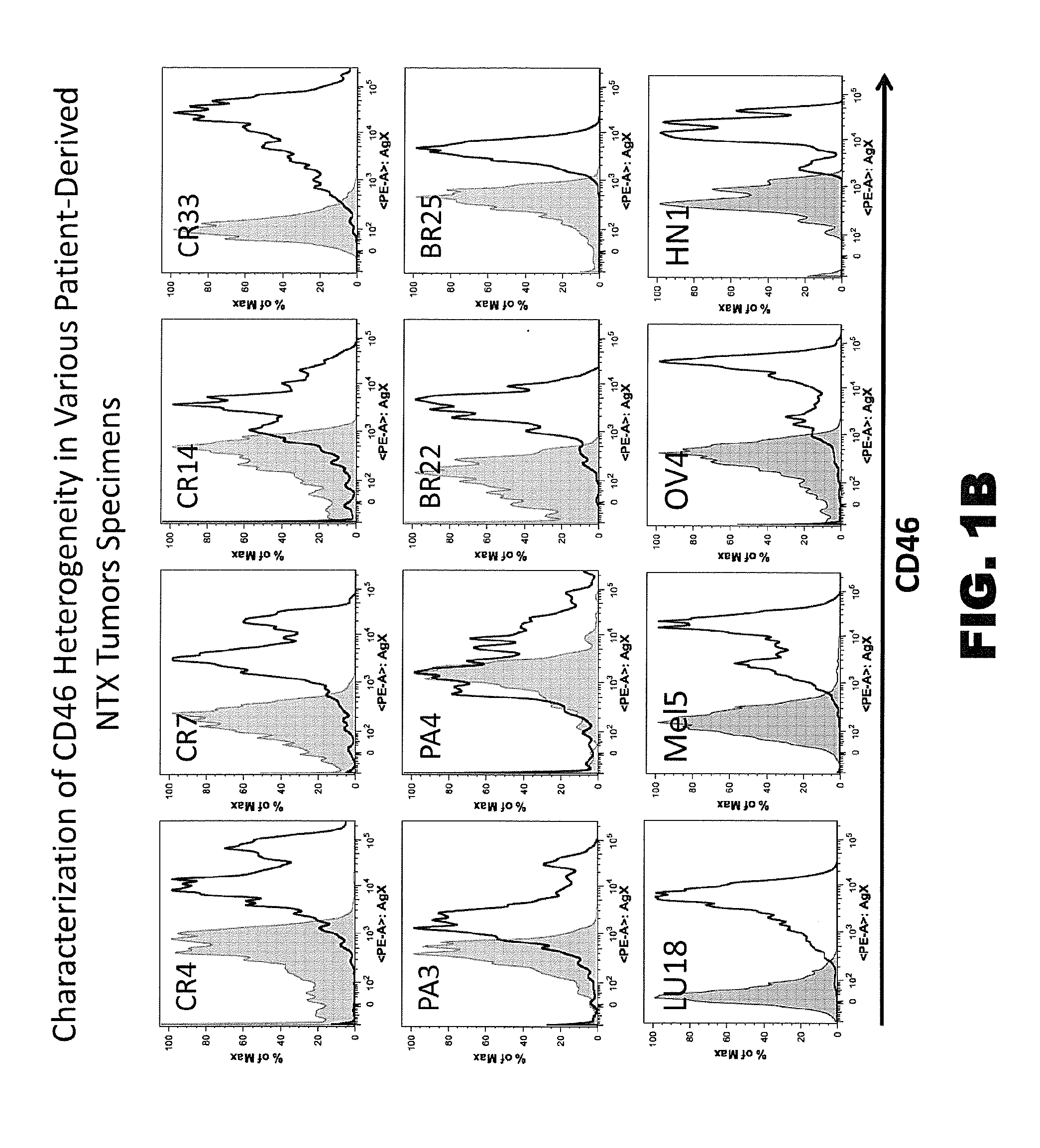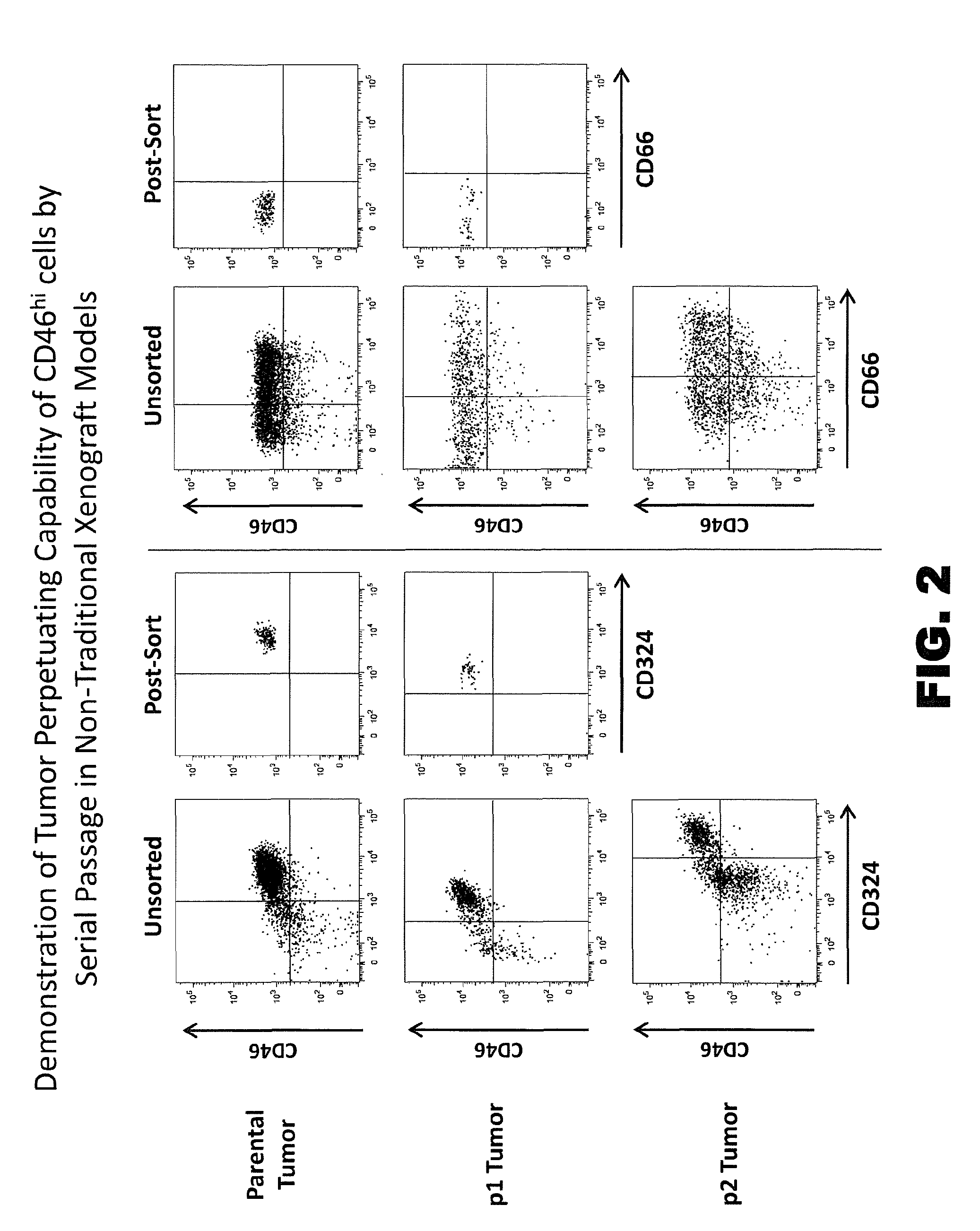Modulators and methods of use
a technology of modulators and modulators, applied in the field of mods, can solve the problems of affecting the survival rate of patients, so as to delay tumor recurrence, improve the progression free survival rate, and reduce the effect of tumor recurren
- Summary
- Abstract
- Description
- Claims
- Application Information
AI Technical Summary
Benefits of technology
Problems solved by technology
Method used
Image
Examples
example 1
CD46 Expression in Tumor Initiating Cell Populations
[0291]To characterize the cellular heterogeneity of solid tumors as they exist in cancer patients, elucidate the identity of tumor perpetuating cells (TPC; i.e. cancer stem cells: CSC) using particular phenotypic markers and identify clinically relevant therapeutic targets, a large non-traditional xenograft (NTX) tumor bank was developed and maintained using art recognized techniques. The NTX tumor bank, comprising a large number of discrete tumor cell lines, was propagated in immunocompromised mice through multiple passages of heterogeneous tumor cells originally obtained from numerous cancer patients afflicted by a variety of solid tumor malignancies. The continued availability of a large number of discrete early passage NTX tumor cell lines having well defined lineages greatly facilitate the identification and isolation of TPC as they allow for the reproducible and repeated characterization of cells purified from the cell lines....
example 2
Demonstration of Enrichment for Tumor Initiating Cell Populations by FACS and Transplantations
[0302]In tumors where there was heterogeneous expression of a particular protein of interest, cells were isolated based on their high or no / low expression of these proteins and then transplanted into immune-compromised mice. Surprisingly, it was observed that most distinct markers identified as heterogeneously expressed using the proprietary PhenoPrint Array did not demonstrate utility in enriching for tumor initiating cells. To determine whether colorectal and pancreatic tumor cells that have high or low cell surface expression of CD46 were enriched for tumorigenic activity in immune-compromised mice, respectively, distinct cell populations were isolated from NTX tumors using cell dissociation and FACS techniques well known to those skilled in the art, and then transplanted at 1,000 to 3 cells per mouse. When tumors reached 800-2,000 mm3, mice were euthanized and the tumors were removed an...
example 3
A Subpopulation of CD46hi Tumor Initiating Cells Demonstrate Tumor Perpetuating Capability by Serial Passage in NTX Models
[0305]While the majority of tumor cells are devoid of tumor forming ability and can thus be characterized as non-tumorigenic (NTG), there is precedent in both normal embryonic development and hematopoietic tumors for highly proliferative cells being able to reconstitute a tumor and / or tissue upon transplantation, but which do not have self-renewal capacity (i.e. a finite lifespan) and are thus referred to as short-term reconstituting cells or progenitor cells.
[0306]To determine whether a subpopulation of CD46hi cells was more or less tumorigenic than others, CD46 was systematically combined with additional markers for the purpose of cell isolation and transplantation. This work led to the identification of two additional cell surface markers for colorectal cancer (CD324 and CD66c) and one additional marker for pancreatic cancer (CD324), which were able to help en...
PUM
| Property | Measurement | Unit |
|---|---|---|
| dissociation constant | aaaaa | aaaaa |
| dissociation constant | aaaaa | aaaaa |
| Tm | aaaaa | aaaaa |
Abstract
Description
Claims
Application Information
 Login to View More
Login to View More - R&D
- Intellectual Property
- Life Sciences
- Materials
- Tech Scout
- Unparalleled Data Quality
- Higher Quality Content
- 60% Fewer Hallucinations
Browse by: Latest US Patents, China's latest patents, Technical Efficacy Thesaurus, Application Domain, Technology Topic, Popular Technical Reports.
© 2025 PatSnap. All rights reserved.Legal|Privacy policy|Modern Slavery Act Transparency Statement|Sitemap|About US| Contact US: help@patsnap.com



